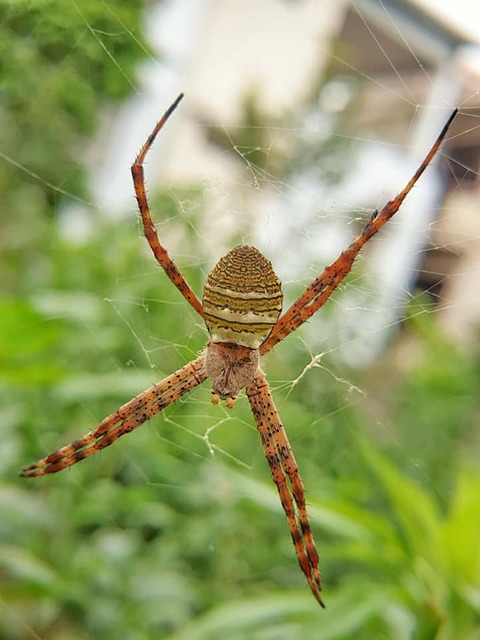Residential spider web cleaning requires understanding different web types and their common locations, such as corners, windows, doors, kitchens, bathrooms, cellars, and attics. Neglecting regular cleaning increases health risks due to trapped insects, debris, dust, and toxic silk. Professional services are recommended for safety and hygiene. Adopt a strategic approach with vacuum cleaners, microfiber dusting, and long-handled dusters. Exterior cleaning involves protective gear, ladders, water pressure, and mild detergent solutions. Regular maintenance prevents webs and promotes a healthier home and outdoor environment.
Tired of those pesky spider webs haunting your home? Effective residential spider web cleaning is essential for hygiene and safety. This comprehensive guide covers everything from understanding web types and common areas in residential spaces, to the dangers of neglecting removal. Learn proven techniques for interior cleaning and gain a step-by-step exterior spider web removal guide, ensuring a web-free environment. Take control of your home with these expert tips tailored for thorough residential spider web cleaning.
Understanding Spider Webs: Types and Common Areas in Residential Spaces
Spider webs are a common sight in residential spaces, both indoors and out, but understanding their types and common areas of occurrence is key when it comes to effective removal. Residential spider web cleaning involves tackling various kinds of webs, each with distinct characteristics. For instance, sticky silk threads are often found in corner areas, where spiders build intricate networks for catching prey. In contrast, loose, fuzzy webs typically indicate a larger spider species’ presence, commonly found near windows or doors.
Residential areas also serve as perfect habitats for spiders due to their warm temperatures and hidden corners. Kitchens, bathrooms, cellars, and attics are particularly vulnerable, as spiders are attracted by food sources and dark, secluded spots. Regular cleaning routines can significantly reduce spider web buildup, but it’s essential to be thorough, especially in these high-risk zones, for a comprehensive residential spider web cleaning regimen.
The Dangers of Neglecting Spider Web Removal
Neglecting regular spider web removal in both interior and exterior spaces can lead to several hazards for homeowners. Spider webs, especially when left undisturbed, can trap small insects, debris, and even dust, creating a breeding ground for spiders and other arachnids. This not only poses a risk of an increased spider population but also potential health concerns.
Residential spider web cleaning is essential for maintaining a safe and hygienic living environment. Accumulated webs can obstruct airflow, especially in corners and hard-to-reach areas, potentially causing respiratory issues. Moreover, some spiders are known to spin toxic silk, which can be hazardous if inhaled or touched, making it crucial to address web buildup promptly through professional residential spider web cleaning services.
Effective Interior Spider Web Cleaning Techniques
When it comes to interior spider web removal, a systematic approach is key. Start by identifying areas prone to web accumulation, such as corners, ceiling fans, and behind furniture. Use a vacuum cleaner with a soft brush attachment to gently dislodge webs. This method is effective for most residential spider web cleaning without causing damage to surfaces. Regularly dusting these areas with a microfiber cloth can also prevent future web buildup.
For stubborn or hard-to-reach webs, consider using a long-handled duster or a web remover tool designed specifically for interior spaces. These tools allow you to safely remove webs from high places and tight corners without the need for climbing or extensive equipment. Remember, effective residential spider web cleaning involves both preventive measures and targeted removal techniques for a pest-free environment.
Exterior Spider Web Removal: A Comprehensive Guide for Safety and Hygiene
Exterior Spider Web Removal is a crucial task for maintaining a safe and hygienic living environment, especially in residential areas. It’s important to address these webs regularly, as they can pose significant risks. Exterior surfaces like eaves, gutters, and window frames often attract spiders due to their proximity to potential food sources and hiding places.
When tackling spider webs outside your home, prioritize safety first. Wear protective gear, including gloves and a long-sleeved shirt, to minimize the risk of bites or stings. Use a sturdy ladder for accessible areas and ensure a clear, stable path to navigate safely. Effective cleaning involves using a combination of water pressure from a hose and a mild detergent solution to break down the web’s glue-like properties without causing damage to your property’s exterior. Regular maintenance will keep your home free from unsightly webs and promote a healthier outdoor environment.
In light of the above, it’s clear that comprehensive residential spider web cleaning is vital for both interior and exterior spaces. By understanding the types of webs and common areas they inhabit, you can proactively address potential dangers and maintain a safe, hygienic living environment. Effective techniques outlined in this guide empower folks to tackle spider webs head-on, ensuring a comfortable and healthy home. Remember that regular removal prevents pest infestations and keeps your space looking neat and tidy.
